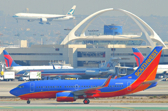Business Growth Strategies: Sometimes Innovation Means Delaying Change
Today, nearly every discussion about business strategy inevitably covers the question of innovation. After all, we live in the most technologically advanced and economically complex business environment in history, and one that promises to only become more intense going forward. We all know that innovation, whatever it is, seems to be an obvious, essential ingredient in business growth strategy. But when and how do we innovate?
 One area in which CEOs often become confused is in the relationship between innovation and technology. Because technology innovation is often the most visible form of innovation we see, many of us tend to equate the two. The result is a common assumption that technology equals innovation, in the sense that if a company develops or installs new technology, ergo it must be innovating.
One area in which CEOs often become confused is in the relationship between innovation and technology. Because technology innovation is often the most visible form of innovation we see, many of us tend to equate the two. The result is a common assumption that technology equals innovation, in the sense that if a company develops or installs new technology, ergo it must be innovating.
And yet, in some cases the reality is just the opposite. Despite the prevailing winds of assumption, there are many critical reasons why delaying change can often be the far more innovative strategy for your business. In fact, the marketplace is littered with companies who embraced new technology and utterly failed to innovate despite it.
In such a confusing environment, how can you tell when it makes sense to proceed and when it makes sense to delay change? What, exactly, is the innovation — and what is the illusion?
Let's take the example of one of America's most innovative transportation companies — Southwest Airlines. Consider that Southwest first developed the "ten-minute turn," a high-efficiency process designed to maximize the flying time of their aircraft and minimize lost time on the ground, back in the early 1970s. Even the company's passenger boarding process (often heralded and perhaps equally often derided) is an innovation.
Therefore, you'd think that such an innovative company would be the first to embrace new technologies in the aircraft it orders. First, consider that Southwest is the world's largest operator of the Boeing 737 aircraft, and in fact was the launch customer for four different variants of the airplane. To be clear: Southwest only operates the 737, and it has a whopping 550 of them in service.
This approach flies in the face of widely-accepted industry logic which dictates that an airline is most effective when it purchases different aircraft for different expected flight lengths and passenger loads – using, for example, a regional jet for short trips with fewer passengers and perhaps a 747 jumbo jet for large-volume, long-distance routes.
Why then would the largest domestic carrier in the United States only use a one-size-fits-all aircraft? The answer is in the cockpit. Flight crews must be trained and type-rated (certified) to fly different kinds of aircraft, and as anyone who has ever been stranded at a legacy carrier's hub for hours even though a plane was sitting there at the gate right in front of them finally realizes, the problem is in matching crews to planes. As soon as bad weather strikes or air traffic control problems slow things down, then the crew needed to fly one kind of plane in Charlotte is instead sitting on the tarmac in Pittsburgh, and the crew that's available in Charlotte can't fly this particular type of plane.
Southwest is willing to accept the limitations of a more narrow optimization model between aircraft and flights in order to gain the benefits of maximum interoperability and flexibility – and this coming from one of the most heavily unionized airlines in the nation.
In addition, Southwest took that philosophy even further and, despite being the first customer for many new variants of the Boeing 737, actually requested less advanced avionics and instruments for their crews than what the industry standard had become. To put it another way, this would be akin to asking Ford to install a manual clutch in a new model of car that was specifically designed to only be available with an automatic transmission.
While this may seem counter-intuitive (after all, why wouldn't you want your pilots to be using the most advanced, safety-engineered avionics available?), again Southwest leadership recognized a critical reality about innovation.
And that is that while humans can adapt quite readily to new advances, what they cannot do easily is move back and forth between new and old. Imagine if you've always driven a stick shift, then you move to an automatic transmission. But then, after a few days or weeks, you move back to stick, then back to automatic. You're liable to jam the gears, confuse the clutch pedal and the brake, and generally wreck havoc... or worse.
Since the airline was already operating numerous aircraft with older avionics – ones that their pilots were world-class experts in using effectively – the only way to migrate to new avionics effectively would be to make a wholesale change in one direction. This is a fundamental tenant of change management: You can only achieve effective change by going one way.
So, back to our business question: When does it make sense to proceed with such a change, and when does it make sense to delay it — in order to be more effectively innovative? Southwest's answer was clear: The company would embrace the new technology when it was tested, proven and offered clear business benefits.
In the case of the airline, those business benefits arrived in the form of Required Navigation Performance (RNP), a new technology-assisted flight procedure in which the FAA would allow aircraft to simplify and shorten their approach process for landing at key airports by utilizing the new technology. The business benefits included smoother flights for the passengers, more efficient flight paths, and lower fuel costs. Once RNP became the available business benefit, Southwest contracted with Boeing not only to install the necessary avionics upgrades in new aircraft, but to actually go back and retrofit most of the carrier's full fleet to boot.
Using a carefully tested software conversion process, the airline then scheduled a literally overnight transformation to execute the change — preceding that with three years of preparation and consistent upgrade training for its 6,000 pilots.
In this manner, Southwest achieved two critical innovations. First, it embraced new technologies based specifically on their integrated ability to reduce costs, improve efficiency, enhance navigation and provide a more comfortable flying experience – all factors that directly relate to the company's core revenue strategy.
And second, it applied truly innovative principles to its change management process, by carefully choreographing and executing the change in a way that maximized alignment and minimized human factor problems.
Before your company embarks upon a new technology change, make sure you define the clear business case first and then establish a comprehensive, strategic process to implement the change. In so doing, you will demonstrate true innovation, across your business and within your marketplace.


Image Credit: Flickr @ Creative Commons
